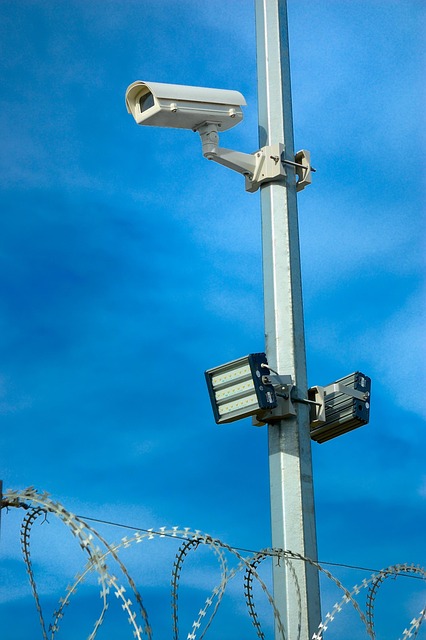Live video streaming technology has transformed content delivery with real-time broadcasting on mobile and desktop platforms, enabling 24/7 remote surveillance. Key components include encoder software, streaming servers, and decoders. This application enhances safety and security through instant camera feeds to monitoring stations or individuals' devices. Mobile apps leverage this technology for unprecedented oversight, optimizing resource allocation and reducing costs in business operations and personal safety management. Advanced features like motion detection and high-resolution video streaming make it a comprehensive solution, but challenges include maintaining seamless connectivity, privacy protection, and ethical data usage guidelines.
Live video streaming via mobile and desktop apps is transforming the way we connect and monitor our world. This article delves into the intricacies of live video streaming technology, highlighting its immense benefits for 24/7 remote surveillance. We explore essential features that make streaming effective on both platforms, while also addressing challenges and proposing solutions for successful implementation. Discover how this dynamic tool empowers constant, real-time observation from anywhere, at any time.
Understanding Live Video Streaming Technology
Live video streaming technology has transformed how we consume and share content, making it possible to broadcast events and experiences in real-time across mobile and desktop platforms. At its core, this technology involves capturing and transmitting video signals over the internet, allowing viewers to join in instantly from anywhere in the world. Key components include encoder software that compresses video data for efficient transmission, streaming servers that host and deliver content, and decoders on receiving devices that translate the signal back into a viewable format.
One notable application of live video streaming is 24/7 remote surveillance, where security cameras capture and transmit feeds in real-time to monitoring stations or individuals’ mobile devices. This technology enhances safety and security by enabling continuous observation and rapid response to potential issues. By leveraging the accessibility and reach of mobile apps, remote surveillance systems provide a level of oversight that was previously unimaginable, making communities and businesses safer.
Benefits of 24/7 Remote Surveillance via Apps
The ability to engage in 24/7 remote surveillance via mobile and desktop apps has transformed how we manage various aspects of our lives, from business operations to personal safety. This continuous monitoring offers numerous advantages, enabling real-time decision-making and proactive responses to unforeseen circumstances. Whether it’s a security guard remotely keeping an eye on a facility or a parent checking in on their child’s whereabouts, this technology provides peace of mind and enhanced control.
Furthermore, 24/7 remote surveillance apps allow for efficient resource allocation by eliminating the need for constant human presence at various locations. This not only reduces operational costs but also ensures that critical tasks can be managed effectively around the clock. With advanced features like motion detection, live alerts, and high-resolution video streaming, these apps offer a comprehensive solution for safety and security in an increasingly connected world.
Essential Features for Effective Mobile & Desktop Streaming
To ensure effective live video streaming via mobile and desktop apps, several essential features play a pivotal role. Firstly, real-time communication tools like instant messaging and voice/video calls facilitate interactive sessions, allowing viewers to engage with streamers directly. Secondly, seamless integration of 24/7 remote surveillance capabilities is crucial for monitoring streaming quality, user interactions, and identifying potential issues promptly.
Moreover, adaptive bitrate streaming technology ensures optimal video quality despite varying network conditions, enhancing the overall viewing experience. Automated features such as scheduling and content moderation tools help manage live streams efficiently. Additionally, robust security measures, including encryption and access controls, safeguard both the content and the privacy of streamers and viewers alike.
Challenges and Solutions in Streamed Surveillance Implementation
Implementing live video streaming for surveillance purposes presents several unique challenges. One of the primary hurdles is ensuring seamless, uninterrupted connectivity, especially in diverse environments with varying network conditions. This requires robust streaming protocols and adaptive bitrate technologies to adjust to available bandwidth, ensuring high-quality video delivery despite potential disruptions.
Another challenge lies in data privacy and security. With 24/7 remote surveillance, protecting sensitive footage from unauthorized access is paramount. Solutions involve employing advanced encryption methods, secure streaming servers, and access controls to safeguard data. Additionally, ethical considerations demand clear guidelines and transparency regarding data usage, helping to build trust among users and subjects of surveillance.
Live video streaming via mobile and desktop apps has transformed the way we monitor and interact with our surroundings, offering unprecedented access and control. By leveraging 24/7 remote surveillance capabilities, individuals and businesses can enhance security, improve operations, and foster better connectivity. Essential features such as high-quality video, real-time alerts, and multi-device compatibility ensure effective streaming while addressing implementation challenges through robust solutions. Embracing this technology opens doors to a safer, more connected future.
